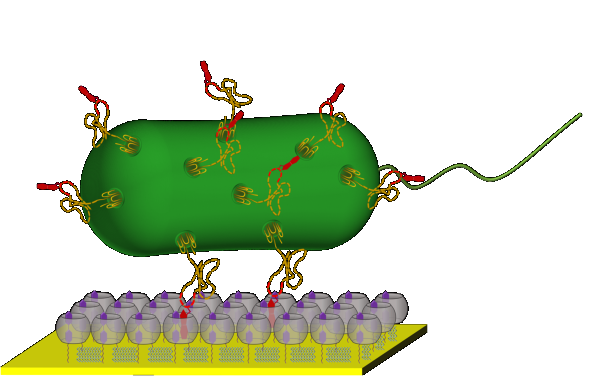Supramolecular chemistry opens the way to living implants

Supramolecular chemistry is the science that is concerned with molecular self-assembly: chemical building blocks which, when you combine them, naturally form larger ordered structures. In this case they are held together by so-called non-covalent bonds: weak bonds that play a key role in all natural processes. Within this branch of science, the art is to develop the various building blocks in such a way that they naturally form the desired structures.
Researchers from the University of Twente MESA+ research institute have now found a method that allows them to ensure that living cells - in this case bacteria from the human body - can be incorporated in materials while maintaining their mobility. This opens the way to a wide range of new applications, for example as part of medical implants. Examples include stents equipped with bacteria on which endothelial cells (cells that form the lining of blood vessels) can grow, or bacteria that can release medicines in specific parts of the body.
According to research leader prof. dr. ir. Pascal Jonkheijm, this research is an important scientific step. "With this research we can now also incorporate real living building blocks in materials, while they retain their full function and mobility."
Natural Velcro
The researchers succeeded in changing the DNA of the E coli bacteria in such a way that the substance CB[8] (a small molecule of two nanometres in size with a namederived from the resemblance of this molecule with a pumpkin of the family of Cucurbitaceae) attaches to a protein on the cell membrane. This substance may then again attach to other building blocks, forming a sort of natural Velcro.
More information: "Incorporating Bacteria as a Living Component in Supramolecular Self-Assembled Monolayers through Dynamic Nanoscale Interactions." ACS Nano, 2015, 9 (4), pp 3579–3586 DOI: 10.1021/acsnano.5b00694
Journal information: ACS Nano
Provided by University of Twente





















